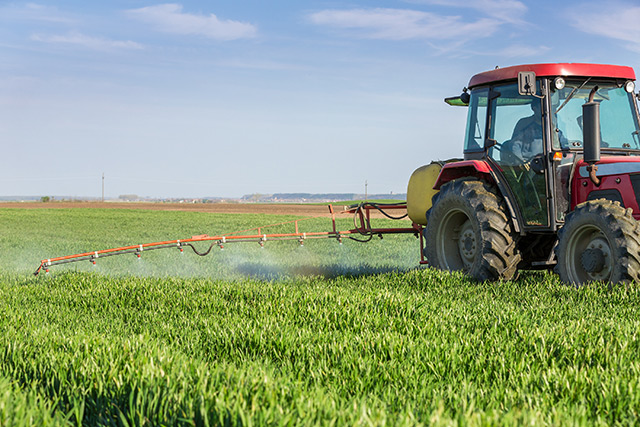
- Herbicides (2,4-D, glyphosate, cloransulam‐methyl, diflufenzopyr, diuron, hexazinone, linuron, pendimethalin, sulfosate, thifensulfuron, tribenuron and trifluralin).
- Insecticides (acephate, bifenthrin, carbaryl, cyhalothrin-lambda, parathion and thiamethoxam).
- Fungicides (azoxystrobin, propiconazole and trifloxystrobin).
- Soil fumigants (chloropicrin).
Lifestyle changes that can help protect against prostate cancer
Considered a "disease of aging," some factors of prostate cancer cannot be changed, such as age, race and genes. However, you can make changes to factors such as diet and lifestyle to prevent prostate cancer.Follow a balanced diet
While scientists still have a lot to learn about the link between diet and prostate cancer prevention, studies suggest that improving your eating habits may help. Reduce your fat intake and eat less trans fats and saturated fats. Make sure your diet includes healthy fats such as omega-3 fatty acids from fish, nuts and seeds. Eat a variety of fruits and vegetables, especially leafy greens. Studies suggest that the antioxidant lycopene, found in cooked or processed tomatoes, may help slow the growth of prostate cancer cells. Meanwhile, cruciferous vegetables like broccoli and cauliflower contain a compound called sulforaphane that may protect against cancer.Exercise regularly
Exercise can help you maintain a healthy weight, and it can also help reduce inflammation, support immune function and protect against some of the negative health effects of a sedentary lifestyle. In turn, these can all help prevent cancer.Quit smoking and drink less
If you are a smoker, quitting can help improve your health in different ways and reduce cancer risk. If you drink, do so in moderation. According to research, red wine has antioxidant properties that may benefit your health. Visit PreventCancer.news for more stories on how to prevent cancer and avoid known carcinogens. Watch this clip about chlormequat, a new pesticide linked to reproductive issues found in 80 percent of Americans. This video is from the Puretrauma357 channel on Brighteon.com.More related stories:
Study: High cancer rates in agricultural areas in the U.S. linked to pesticide use. STUDY: Microplastics in the body may aggravate cancer and spur metastasis. Just four types of cancer made up half of the 1.96 million cancer cases in the U.S. in 2023. Common herbicides linked to diminished brain function in young adults. Johnson & Johnson agrees to $700M settlement over talcum powder safety concerns. Sources include: ChildrensHealthDefense.org HopkinsMedicine.org Brighteon.comTurkey unleashes terrorist JIHAD against Aleppo government in Syria
By Ethan Huff // Share
British lawmakers move forward with bill legalizing ASSISTED SUICIDE in the United Kingdom
By Laura Harris // Share
Harmful ingredients in personal care products
By HRS Editors // Share
Coconut oil improves brain function in Alzheimer’s patients
By News Editors // Share
An invisible assault: How everyday heavy metals sabotage brain health
By willowt // Share
Pentagon warns of China's rapidly expanding nuclear arsenal
By kevinhughes // Share
FCC grounds new Chinese drones in sweeping security move
By avagrace // Share
The methylation switch: Scientists identify diet that can turn back the cellular clock
By jacobthomas // Share
Renaissance or Ruin: A wake-up call for cultural revival and self-sufficiency
By kevinhughes // Share
Weight loss in midlife may trigger brain inflammation, study finds
By avagrace // Share











